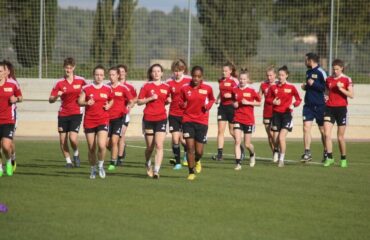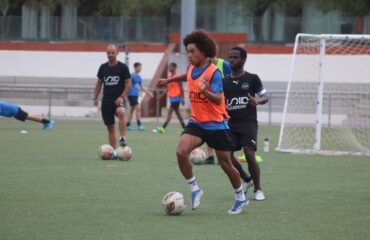Detecting injuries in football early is essential to protect a player’s development and ensure healthy progress within such a demanding sport. In a context of intense training, continuous matches, and growing physical requirements, understanding the signals the body sends before a potential problem becomes an obligation for any footballer. At SIA Academy, we understand this well, and that is why we educate our players on the importance of correctly interpreting every bodily signal, even when it seems minor.
Many serious injuries begin as simple discomfort and, due to lack of knowledge or competitive pressure, are ignored until it is too late. Our goal is to develop athletes capable of recognizing risk patterns and acting before the damage increases.
Table of contents
Recognizing the first symptoms
The body always warns you. The difficult part is knowing how to listen. Many players consider it “normal” to feel pain constantly, but this only increases the risk of avoidable injuries. As Ximo, our physical trainer, often says: “Your body doesn’t speak to bother you; it speaks to protect you.”
The early warning signs often include:
- Localized pain that appears repeatedly in the same spot
- Momentary loss of stability or coordination
- Stiffness that remains even after warming up
- Fatigue that does not disappear with proper rest
- Pain when executing a specific technical gesture
Although these symptoms may seem minor, many of them anticipate muscle, tendon, or joint injuries that could be avoided through early protocol.

Importance of technique and workload
Many injuries do not result from collisions or isolated actions but from the repeated execution of movements that are not performed correctly. A technical gesture repeated improperly for weeks generates excessive tension in areas not prepared to handle it.
At SIA Academy, we constantly work on technical correction, because movement efficiency is one of the most effective prevention tools. To this we add careful monitoring of volume and training intensity. For us, a footballer should not train more, but train better. As Ximo emphasizes: “The right workload makes you progress; the wrong one breaks you.”
Regulating effort, avoiding overtraining peaks, and combining intense sessions with recovery work significantly reduces the number of injuries.
Signs during training
There are moments when a player must stop immediately to prevent a temporary discomfort from turning into a more serious injury. The most frequent signs include:
- Sudden loss of strength in a specific muscle group
- Sharp pain when sprinting or changing direction
- Visible inflammation during practice
- Dizziness or inability to maintain the usual intensity
In our program, we stress the importance of stopping in time, even if it means leaving an exercise incomplete. Training through pain does not demonstrate commitment — it demonstrates imprudence, and it can trigger injuries that limit performance for weeks.
Signs after training
Not all injuries appear in the moment. Some develop hours later, when the body is no longer in an activated state. This is why it is essential to pay attention to night-time and morning sensations. The most common indicators include:
- Pain that progressively increases with everyday movements
- Inability to fully load or support a joint
- A sensation of internal pressure or inflammation that does not subside
- Disproportionate muscular fatigue
When one of our players presents these signs, we carry out an individual functional assessment to determine whether training load should be modified or if a specialist evaluation is needed.

How to act when a possible injury appears
A fast and precise response is fundamental:
- Stop the activity as soon as pain appears.
- Apply ice during the first hours to reduce inflammation.
- Immediately report the issue to the coaching staff.
- Avoid self-medication, especially uncontrolled anti-inflammatories.
- Carry out a professional evaluation to determine the real extent.
A proper immediate response can prevent days — or even weeks — of downtime. At SIA Academy, we give absolute priority to the player’s health, because without a solid physical foundation, sustainable performance is impossible.
Prevention of injuries: the most effective tool
Although no methodology can eliminate the risk of injuries completely, it is possible to minimize it through an integrated routine based on:
- Progressive and well-structured warm-ups
- Strength-training focused on postural control
- Mobility sessions that improve joint range
- Nutrition adapted to training demands
- Proper rest and stable sleep habits
- Continuous hydration throughout the day
This multidisciplinary approach allows the player to reach a high performance level without compromising physical health.






